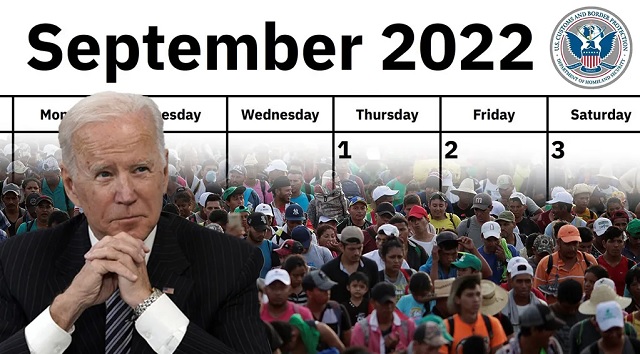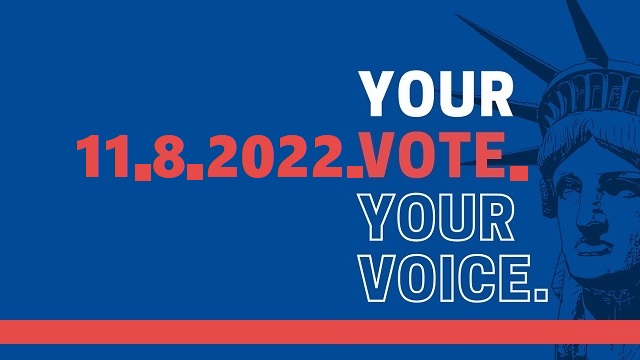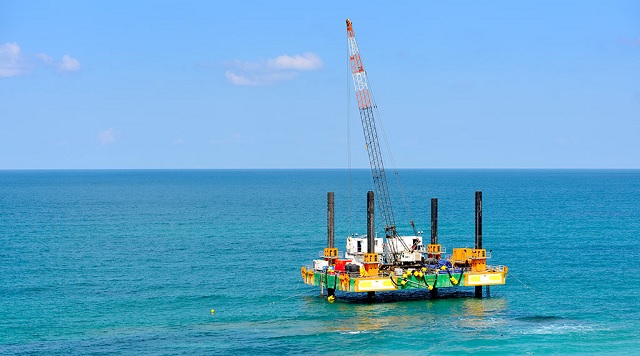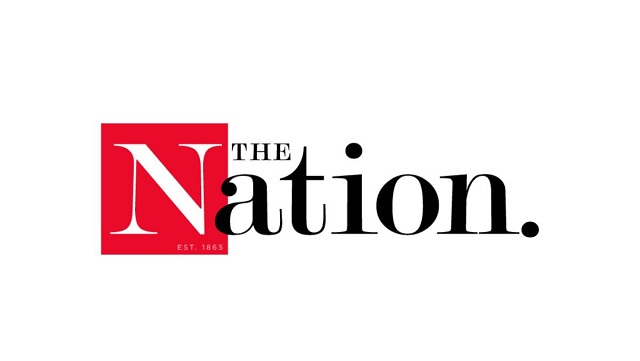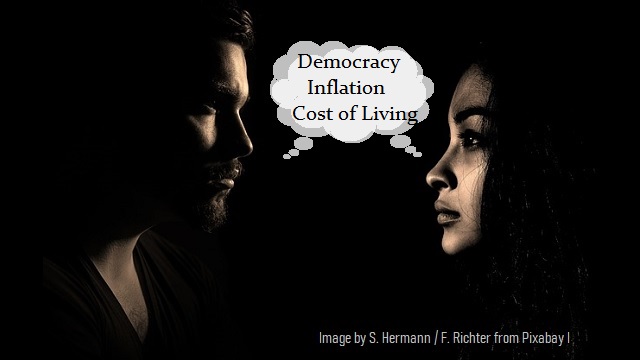
The following is adapted from a talk delivered at Hillsdale College on October 20, 2022, sponsored by the student group Praxis.
On April 15, 2020—a full month after President Trump’s fateful news conference that greenlighted lockdowns to be enacted by the states for “15 Days to Flatten the Curve”—the President had a revealing White House conversation with Anthony Fauci, the head of the National Institute of Allergy and Infectious Diseases.
“I’m not going to preside over the funeral of the greatest country in the world,” Trump wisely said, as reported in Jared Kushner’s book Breaking History. The promised Easter reopening of the economy had not happened, and Trump was angry. He also suspected that he had been misled and was no longer speaking to coronavirus coordinator Deborah Birx.
“I understand,” Fauci responded meekly. “I just do medical advice. I don’t think about things like the economy and the secondary impacts. I’m just an infectious diseases doctor. Your job as president is to take everything else into consideration.”
That conversation reflected the tone of the debate, then and later, over the lockdowns and vaccine mandates. The economy—viewed as mechanistic, money-centered, mostly about the stock market, and detached from anything truly important—was pitted against public health and the preservation of life. The assumption seemed to be that you had to choose one or the other—that you could not have both.
It also seemed to be widely believed in 2020 that the best approach to pandemics was to institute massive human coercion—a belief based on the novel theory that if you make humans behave like non-player characters in computer models, you can keep them from infecting one another until a vaccine arrives to wipe out the pathogen.
The lockdown approach in 2020 stood in stark contrast to a century of public health experience in dealing with pandemics. During the great influenza crisis of 1918, only a few cities tried coercion and quarantine—mostly San Francisco, also the home at the time of the first Anti-Mask League—whereas most locations took a person-by-person therapeutic approach. Given the failure of quarantines in 1918, they were not employed again during the disease scares—some real, some exaggerated—of 1929, 1940-44, 1957-58, 1967-68, 2003, 2005, and 2009. In all of those years, even the national media acted responsibly in urging calm.
But not in 2020, when policymakers—whether due to intellectual error, political calculations, or some combination of the two—launched an experiment without precedent. The sick and well alike were quarantined through the use of stay-at-home orders, domestic capacity limits, and business, school, and church shutdowns. This occurred not only in the U.S., but worldwide—with the notable exception of perhaps five nations and the state of South Dakota.
Needless to say, the consequences were profound. Coercion can be used to turn off an economy. But given the resulting trauma, turning an economy back on is not so easy. That is why, 30 months later, we are experiencing the longest period of declining real income since the end of World War II, a health crisis, an education crisis, an exploding national debt, 40-year high inflation, continued and seemingly random shortages, dysfunction in labor markets, a breakdown of international trade, a dramatic collapse in consumer confidence, and a dangerous level of political division.
Meanwhile, what happened to COVID? It came anyway, just as the best epidemiologists predicted it would. It had a highly stratified impact, consistent with the information we had from the very early days: the at-risk population was largely the elderly and infirm. To be sure, almost everyone eventually came down with COVID with varying degrees of severity: some people shook it off in a couple of days, others suffered for weeks, and many died—although, even now, there is grave uncertainty about the true number of COVID deaths, due both to faulty PCR testing and to financial incentives given to hospitals to attribute non-COVID deaths to COVID.
Tradeoffs
Even if the lockdowns had saved lives over the long term—and the literature on this overwhelmingly suggests they did not—it would be proper to ask the question: at what cost? What are the tradeoffs?
Because economic considerations were shelved for the emergency, policymakers failed to consider tradeoffs. Thus did the White House on March 16, 2020, send out the most dreaded imaginable directive from an economic point of view: “bars, restaurants, food courts, gyms, and other indoor and outdoor venues where groups of people congregate should be closed.” And the results were legion.
For one thing, the lockdowns kicked off an epic bout of government spending. COVID-response spending amounted to at least $6 trillion above normal operations, running the national debt up to 121 percent of GDP. For comparison, our national debt in 1981 amounted to 35 percent of GDP—and Ronald Reagan correctly declared that a crisis.
The Federal Reserve purchased this new debt with newly created money nearly dollar for dollar. From February to May 2020, the total money supply (what economists call M2) increased by an average of $814.3 billion per month. The peak came early the following year: on February 22, 2021, the annual rate of increase of M2 reached a staggering 27.5 percent.
At the same time, as one would expect in a crisis of this sort, spending plummeted. Since a severe decrease in spending puts deflationary pressure on prices regardless of what happens with the money supply, the bad effects of printing all this new money were pushed off into the future.
That future is now. The explosion in M2 has resulted in the highest inflation in 40 years. And this inflation is accelerating, at least according to the October 12, 2022, Producer Price Index, which is more volatile than it has been in months and is running ahead of the Consumer Price Index—a reversal from earlier in the lockdown period. This new pressure on producers has heavily impacted the business environment and created recessionary conditions.
Moreover, this has not just been a U.S. problem. Most nations in the world followed the same lockdown strategy while attempting to substitute government spending and printing money for real economic activity. The Federal Reserve is being called on daily to step up its lending to foreign central banks through the discount window for emergency loans. It is now at the highest level since spring 2020. The Fed lent $6.5 billion to two foreign central banks in just one week this October. The numbers are scary and foreshadow a possible international financial crisis.
The Great Head Fake
Back in the spring and summer of 2020, we seemed to be experiencing a miracle. State governments around the country had crushed social activity and free enterprise, and yet real income was soaring. Between February 2020 and March 2021, a time of low inflation, real personal income was up by $4.2 trillion. It felt like magic. But it was actually the result of government stimulus checks.
Initially, people used their new-found riches to pay off credit card debt and boost savings. In the month after the first stimulus, the personal savings rate went from 9.6 to 33 percent. Also, since people were being coerced into living an all-digital existence, there was lots of spare time and a need for new equipment. So companies like Netflix and Amazon benefited enormously.
After the summer of 2020, people started to get the hang of having “free money” dropped into their bank accounts. So by November, the savings rate had dropped back down to 13.3 percent. When the Biden administration unleashed another round of stimulus in 2021, the savings rate at first nearly doubled. But fast forward to the present and people are saving only 3.5 percent—half the historical norm dating back to 1960—and credit card debt is soaring, even though interest rates are 17 percent and higher.
In other words, all the curves inverted once inflation came along to eat out the value of the stimulus. In reality, all that “free money” turned out to be very expensive. The dollar of January 2020 is now worth only $0.87, which is to say that the stimulus spending covered by the Federal Reserve printing money stole $0.13 of every American dollar in the course of only 2.5 years.
This was one of the biggest head fakes in the history of modern economics. The pandemic planners created paper prosperity to cover up the grim reality they had brought about. But paper prosperity is false prosperity. It could not and did not last. Between January 2021 and September 2022, prices increased 13.5 percent across the board, costing the average American family $728 in September alone.
Even if inflation were to stop today, the inflation already in the bag will cost the average American family $8,739 over the next twelve months.
Lingering Carnage
While Big Tech moguls and urban information workers thrived during the pandemic lockdowns, Main Street suffered. The look of most of America in those days was post-apocalyptic, with vast numbers of people huddled at home either alone or with immediate families, fully convinced that a universally deadly virus was lurking outdoors. Meanwhile, the CDC was recommending that “essential businesses” install countless Plexiglass barriers and place social distancing stickers everywhere people would walk.
This sounds ridiculous now, but for many it wasn’t then. I recall being yelled at for walking only a few feet into a grocery aisle that had been designated by stickers to be one-way in the other direction. There were reports of people using drones to identify and report neighbors who were holding prohibited parties, weddings, or funerals. Parents masked up their kids even though kids were at near-zero risk, and nearly all schools were closed. A friend of mine arrived home from a visit out of town and his mother demanded that he leave his “COVID-infested” bags on the porch for three days.
Those were the days when people believed the virus was outdoors and we should stay in. Oddly, this changed over time to where people believed that the virus was indoors and we should go out. It eventually became clear that we had moved from government-mandated mania to a popular delusion for the ages.
The resulting damage to small business has yet to be thoroughly documented. At least 100,000 restaurants and stores closed in Manhattan alone. Commercial real estate prices crashed, and big business moved in to scoop up bargains. Hotels, bars, restaurants, malls, theaters, and anyone without home delivery suffered terribly. The arts were devastated. During the deadly Hong Kong flu of 1968-69, we had Woodstock. This time around we had to settle for YouTube.
It may seem odd, but the health care industry suffered as well. The CDC strongly urged the closing of hospitals to anyone not facing a non-elective surgery or suffering with COVID. This turned out to exclude nearly everyone who would routinely show up for diagnostics or other normal treatments. As a result, health care sector employment fell 1.6 million in early 2020. Even stranger is the fact that total health care spending fell off a cliff. From March to May 2020, health care spending collapsed by $500 billion or 16.5 percent. This created an enormous financial problem for hospitals in general.
This is not to mention dentistry. I know from personal experience that in Massachusetts, you couldn’t get a much-needed root canal. Why? Because a root canal required a preliminary cleaning and examination, and those were prohibited as “nonessential.” I looked into traveling to Texas for a root canal, but the dentists there were required by law to force out-of-state patients to quarantine in the state for two weeks.
This virtual abolition of dentistry for a time was in keeping with the injunction of a headline in The New York Times on February 28, 2020: “To Take on the Coronavirus, Go Medieval on It.” What better way to describe the institution of a feudal system of dividing work and workers across the nation in terms of “essential” and “nonessential”?
The New York Times wasn’t affected by the lockdowns, of course, because media centers were deemed essential. Thus for two years, it was able to keep its presses running and instruct its Manhattan readers to stay home and have their groceries delivered. Delivered by whom, The New York Times neither said nor cared. It was apparently unimportant if the working classes were exposed to COVID in service to the elites. And then afterwards, when the working classes had natural immunity that was superior to the immunity offered by the so-called COVID vaccines, they were subjected to vaccine mandates.
Millions across the nation eventually quit or were fired due to those vaccine mandates. Highly qualified members of the U.S. military are still being discharged for noncompliance.
We are told that unemployment today is very low and that many new jobs are being filled, but most of those are existing workers getting second and third jobs. Because families are struggling to pay the bills, moonlighting and side-gigging are now a way of life. The full truth about labor markets requires that we look at the labor-participation and worker-population rates, both of which are low. Millions have gone missing. Most are working women who still cannot find child care because that industry has yet to recover from the lockdowns. Labor participation among women is back at 1988 levels. There are also large numbers of 20-somethings who moved home and went on unemployment benefits. Many more have simply lost the will to achieve and build a future.
The supply chain breakages we are seeing today are also a lingering result of the stoppage of economic activity in early 2020. By the time the lockdown regime was relaxed and manufacturers started reordering parts, they found that many factories overseas had already retooled for other kinds of demand. This particularly affected the semiconductor industry for automotive manufacturing. Overseas chip makers had turned their attention to personal computers, cellphones, and other devices. This was the beginning of the car shortage that sent prices through the roof. It also created a political demand for U.S.-based chip production, which has in turn resulted in another round of export and import controls.
These sorts of problems have affected every industry without exception. Why, for example, do we have a paper shortage? Because so many of the paper factories shifted to plywood and cardboard after prices sky-rocketed in response to the housing and mail delivery demand created by the lockdowns and stimulus checks.
Conclusion
We could write books listing all the economic calamities directly caused by the disastrous pandemic response. We will be suffering the results for years. Yet even today, too few people grasp the relationship between our current economic hardships—extending even to growing international tensions and the breakdown of trade and travel—and the brutality of the pandemic response.
Anthony Fauci said at the outset: “I don’t think about things like the economy and the secondary impacts.” Melinda Gates admitted in a December 4, 2020, interview with The New York Times: “What did surprise us is we hadn’t really thought through the economic impacts.”
There is no wall of separation between economics and public health. A healthy economy is indispensable for healthy people. Shutting down economic life was a singularly bad idea for taking on a pandemic.
Economics is about people making choices and institutions enabling them to thrive. Public health is about the same thing. Driving a wedge between the two, as happened in 2020, ranks among the most catastrophic public policy decisions of our lifetimes.
Health and economics both require the nonnegotiable called freedom. May we never again experiment with the near abolition of freedom in the cause of mitigating disease.
AUTHOR
Jeffrey A. Tucker
Jeffrey A. Tucker is founder and president of the Brownstone Institute and a daily columnist on economics for The Epoch Times. From 2017-2021, he served as editorial director of the American Institute for Economic Research. He has written for several publications, including The Wall Street Journal, National Review, The Freeman, and Chronicles. He is the author of 20 books, including Liberty or Lockdown.
EDITORS NOTE: This Imprimis Digest column is republished with permission. ©All rights reserved.
